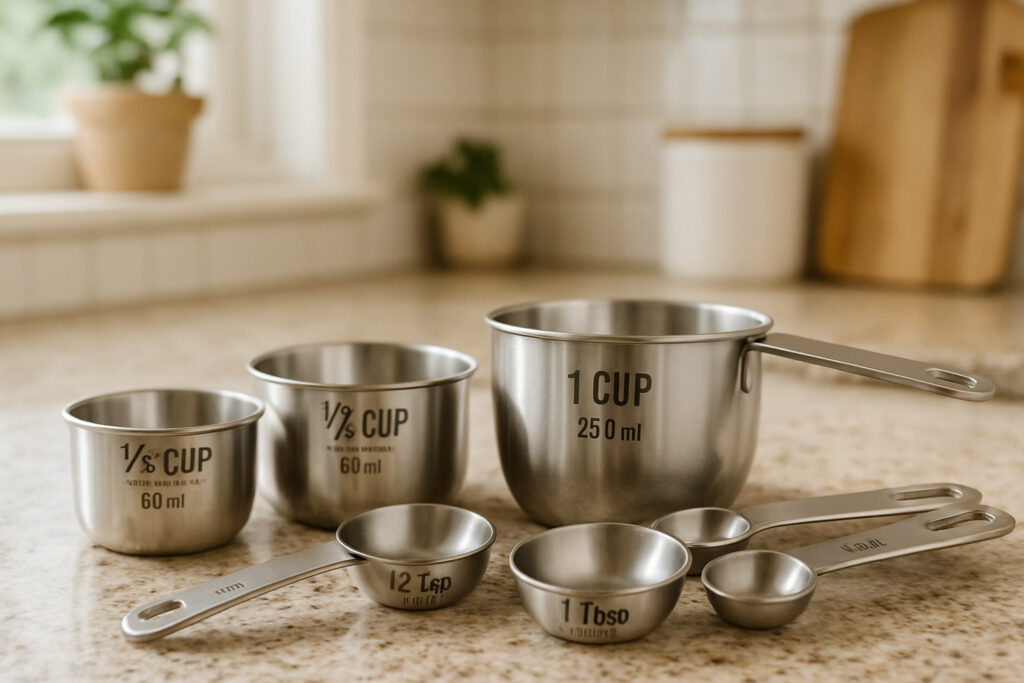Why Knowing How Many Tablespoons in a Cup Matters for Every Cook
How many tablespoons in a cup is one of the most searched cooking questions – and for good reason. Whether you’re following a family recipe or trying a new dish from your latest culinary trip, accurate measurements make the difference between success and disaster in the kitchen.
Quick Answer:
- 1 US cup = 16 tablespoons
- 1/2 cup = 8 tablespoons
- 1/3 cup = 5 1/3 tablespoons
- 1/4 cup = 4 tablespoons
As one home baker put it: “When you’re working your way through a recipe, the last thing you want is to be presented with an impromptu math test!” This frustration is real for anyone who’s ever found themselves with only measuring spoons when a recipe calls for cups.
Understanding these basic conversions becomes even more important when you’re exploring international cuisines. A recipe from a Parisian bistro might use metric cups, while your grandmother’s American cookie recipe uses US customary measurements. Getting these conversions right ensures your culinary experiments taste exactly as intended.
The how many tablespoons in a cup conversion is your foundation for kitchen confidence. Once you master this basic relationship, you can tackle any recipe with precision – whether you’re baking delicate pastries or scaling up a sauce for dinner guests.
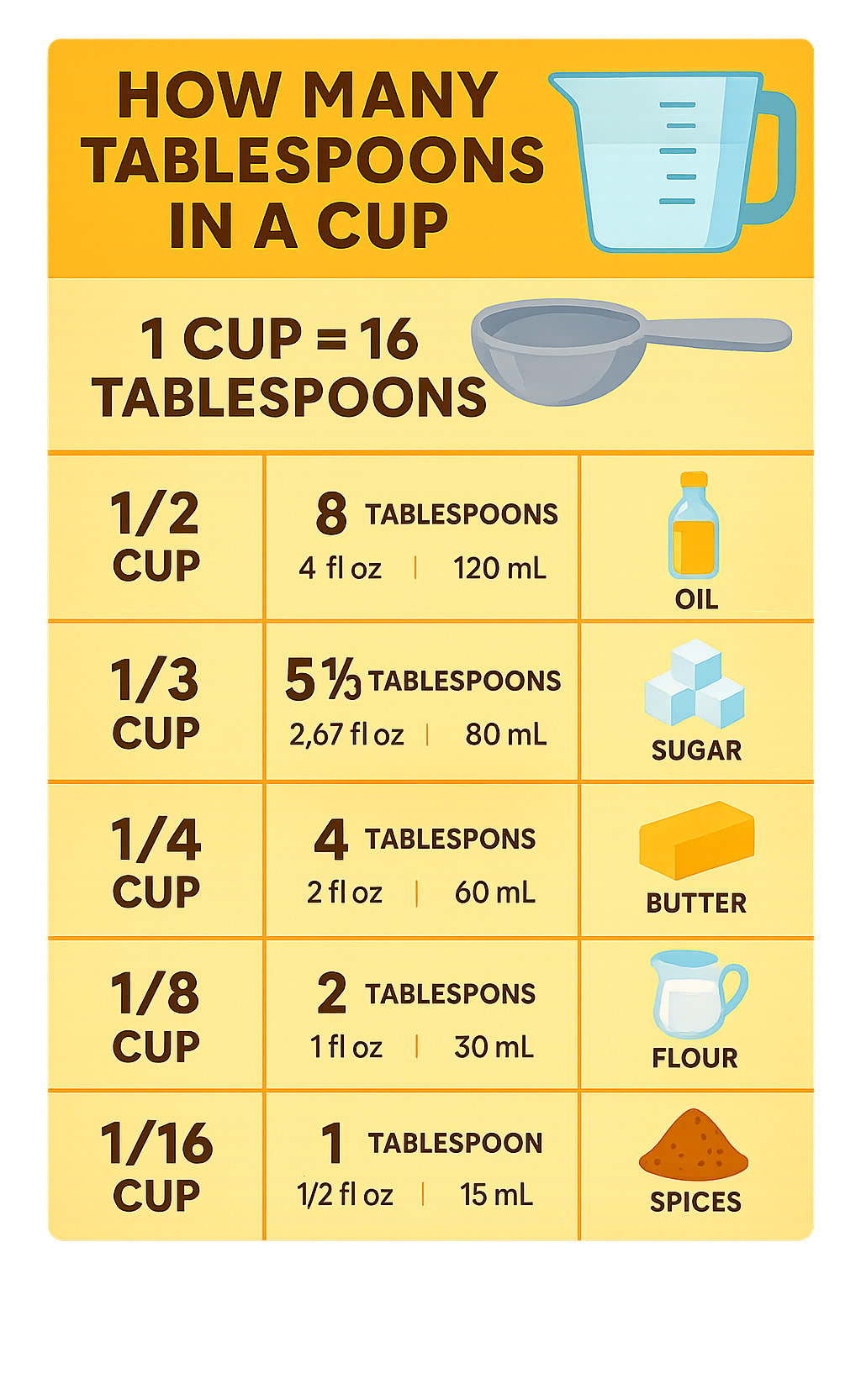
Handy how many tablespoons in a cup terms:
Understanding Kitchen Measurements
Before we explore how many tablespoons in a cup in detail, let’s build a solid foundation of kitchen measurements. Think of this as your culinary compass – once you understand these basics, you’ll steer any recipe with confidence.
The first thing to grasp is the difference between volume and weight measurements. Volume measurements like tablespoons and cups tell us how much space an ingredient occupies, while weight measurements tell us how heavy it is. This distinction becomes your best friend when you’re trying recipes from different countries during your food trips.
Here’s the beautiful thing about volume measurements: they’re remarkably consistent. Whether you’re measuring water for pasta, flour for bread, or olive oil for a salad dressing, 1 cup always equals 16 tablespoons. This reliability makes volume conversions your go-to method for most home cooking.
However, measurements isn’t quite that simple. Different countries developed their own standards over centuries, which explains why that amazing recipe you found from a London food blog might seem a bit off when you make it at home.
| Cup Type | Volume (ml) | Tablespoons | Notes |
|---|---|---|---|
| US Customary | 236.6 ml | 16 tbsp | Most common in American recipes |
| US Legal | 240 ml | 16 tbsp | Used for nutrition labeling |
| Metric Cup | 250 ml | 16⅔ tbsp | Standard in most countries |
| Imperial Cup | 284.1 ml | 19.2 tbsp | Used in some UK recipes |
The US customary system dominates American kitchens and most online recipes. The metric system rules in most other countries, while imperial measurements still appear in some traditional British recipes. The US legal cup shows up mainly on food packaging for nutritional information.
What is a Tablespoon?
A tablespoon is your versatile measuring workhorse. This unit of volume equals 3 teaspoons, 15 milliliters, and most importantly for our purposes, 1/16 of a cup.
You’ll see it abbreviated as “tbsp” in most recipes (sometimes just “T” in older cookbooks). This small but mighty measurement bridges the gap between the tiny teaspoon and the larger cup, making it perfect for ingredients like vanilla extract, olive oil, or butter.
Here’s something fascinating we’ve finded through exploring international kitchens: not all tablespoons are created equal. While US and metric tablespoons are nearly identical at 14.8 ml and 15 ml respectively, Australian tablespoons clock in at a hefty 20 ml. That’s a 25% difference that can throw off your baking results if you’re not careful.
The tablespoon definition remains consistent whether you’re measuring liquid or dry ingredients, which makes it incredibly reliable for recipe conversions.
What is a Cup?
The cup serves as the cornerstone of American cooking measurements. One US cup equals 8 fluid ounces, approximately 237 milliliters, 16 tablespoons, and 48 teaspoons.
Interestingly, the cup measurement largely disappeared from British recipes in the 1960s, but it remains the backbone of American home cooking. This is exactly why mastering how many tablespoons in a cup becomes essential when you’re adapting recipes from different culinary traditions.
The conversion factor of 16 tablespoons per cup is your mathematical key to recipe success. Whether you’re doubling a marinade recipe for a dinner party or halving a dessert for two, this ratio stays rock-solid reliable.
Cup variants exist because different countries standardized their measurements at different times in history. The good news? Most modern recipes specify which type of cup they’re using, and online recipe sites typically default to US measurements unless otherwise noted.
How Many Tablespoons in a Cup
Here’s the moment you’ve been waiting for: how many tablespoons in a cup? The answer is beautifully simple – 1 cup equals exactly 16 tablespoons. This golden ratio works for every single ingredient in your kitchen, whether you’re measuring vanilla extract for cookies or olive oil for a Mediterranean dish you finded on your last culinary trip.
The math couldn’t be more straightforward. When you need to convert cups to tablespoons, just multiply by 16. Going the other direction? Divide tablespoons by 16 to get cups. It’s the kind of simple formula that makes cooking feel less like a science experiment and more like the creative art it should be.
What makes this conversion truly magical is its consistency. According to FDA guidance on household measures, these standardized measurements ensure your grandmother’s apple pie tastes the same whether you make it in your New York City apartment or recreate it anywhere else.
Let’s break down those tricky fractional cups that always seem to pop up in recipes. A full cup gives you 16 tablespoons, while 3/4 cup equals 12 tablespoons – perfect for that three-quarter measurement that baking recipes love. Half a cup translates to 8 tablespoons, making it easy to halve recipes when you’re cooking for two instead of a crowd.
The trickier fractions become manageable once you know the pattern. Two-thirds cup equals 10 tablespoons plus 2 teaspoons, while one-third cup gives you 5 tablespoons plus 1 teaspoon. A quarter cup simplifies to 4 tablespoons, and one-eighth cup (those tiny measurements some recipes demand) equals just 2 tablespoons.
Here’s something that surprises many home cooks: this how many tablespoons in a cup conversion works the same for dry and liquid ingredients. A cup of flour takes up the same space as a cup of milk, even though they weigh completely different amounts. This consistency makes volume measurements incredibly reliable for everyday cooking.
How Many Tablespoons in a Cup of Butter?
Butter gets special treatment in American kitchens because it comes pre-portioned in those convenient sticks. Most butter packaging shows half-cup sticks containing 8 tablespoons each, which means a full cup of butter still equals our magic number of 16 tablespoons.
Those wrapper markings on butter sticks are your best friend when baking. Each stick clearly shows tablespoon measurements, so you can cut exactly what you need without dirtying measuring spoons. The density of butter doesn’t change this volume relationship – 16 tablespoons still make one cup.
For the most precise measurements, especially in delicate pastries, consider melting your butter first if the recipe allows. Solid butter can trap tiny air pockets that slightly affect volume, while melted butter gives you perfect accuracy every time.
How Many Tablespoons in a Metric Cup?
When you’re exploring international recipes or cooking from that amazing cookbook you picked up abroad, you’ll encounter metric cups containing 250 milliliters. Since metric tablespoons hold 15 ml each, a metric cup contains 16⅔ tablespoons.
This small difference – about 4% more volume than US measurements – rarely affects everyday cooking. We’ve found that most soups, stews, and casual dishes work perfectly fine using the measurements interchangeably. However, when precision matters in baking those delicate French macarons or German strudels, stick to exact conversions for the best results.
The beauty of understanding both systems means you can confidently tackle any recipe, whether it comes from a New York City food blog or a traditional cookbook from metric-measuring countries.
Conversion Charts & Quick Reference
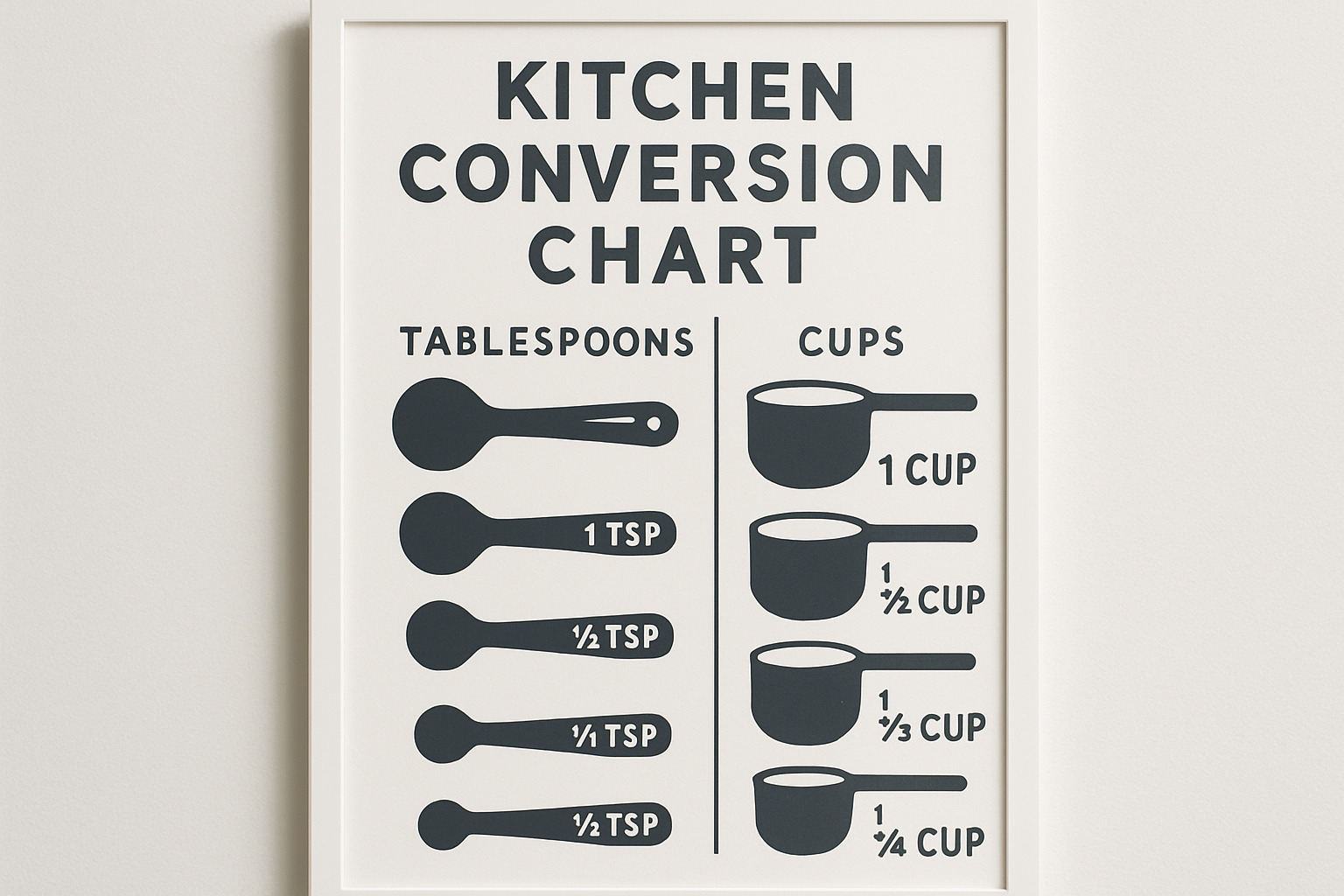
Let’s be honest – nobody wants to do mental math when they’re in the middle of cooking a delicious meal. That’s why having these how many tablespoons in a cup conversions memorized (or pinned to your refrigerator) is a game-changer for your kitchen confidence.
We’ve all been there: you’re following a recipe that calls for 3/4 cup of something, but you can only find your tablespoon measure. Instead of hunting through drawers or doing fraction calculations, you’ll know instantly that you need 12 tablespoons. Problem solved!
The beauty of these conversions is that they work consistently across all your favorite ingredients. Whether you’re measuring olive oil from your last trip to Italy or locally-sourced honey, the volume relationships stay the same.
For the most accurate measurements, especially with dry ingredients, use the spoon and level method. This technique prevents packing and ensures your measurements match what the recipe developer intended. When working with dairy like heavy cream, precise measurements become even more important since they directly impact your dish’s final texture and richness.
Cups to Tablespoons Cheat Sheet
Here’s where the magic happens – your complete guide to never guessing measurements again. These are the conversions that’ll save you time and ensure perfect results every time.
Starting with the most common fractions you’ll encounter: 1/2 cup equals 8 tablespoons – probably the conversion you’ll use most often when halving recipes. 1/4 cup equals 4 tablespoons, which is perfect for small amounts of vanilla extract or lemon juice.
For those trickier fractions, 1/3 cup equals 5 tablespoons plus 1 teaspoon – this one trips up even experienced cooks. 2/3 cup equals 10 tablespoons plus 2 teaspoons, which comes in handy for many baking recipes.
The less common but still useful conversions include 3/4 cup equaling 12 tablespoons and 1/8 cup equaling 2 tablespoons. That last one is particularly helpful when you need just a splash of something flavorful.
1/16 cup equals exactly 1 tablespoon – the smallest cup fraction that directly converts to a whole tablespoon measurement. This relationship forms the foundation of our entire measurement system.
Tablespoons to Other Units
Understanding how tablespoons scale up to larger measurements opens up a whole new world of cooking possibilities. When you’re meal prepping or cooking for a crowd, these relationships become incredibly valuable.
Think of it this way: 32 tablespoons make 1 pint, which means you can easily scale up that perfect salad dressing recipe. 64 tablespoons equal 1 quart – useful when you’re making large batches of soup or sauce to freeze.
For the really big cooking projects, 256 tablespoons equal 1 gallon. While you probably won’t count out that many tablespoons, understanding this relationship helps when you’re scaling recipes dramatically up or down.
The metric conversions are equally helpful, especially when exploring international recipes. 1 tablespoon equals 15 milliliters, so 16 tablespoons (our standard cup) equals 240 milliliters. When you need about a liter of liquid, you’re looking at roughly 67 tablespoons.
For even more comprehensive liquid measurements, our guide on how many ounces in a gallon covers all the volume conversions you’ll ever need in your culinary trips.
Measuring Like a Pro
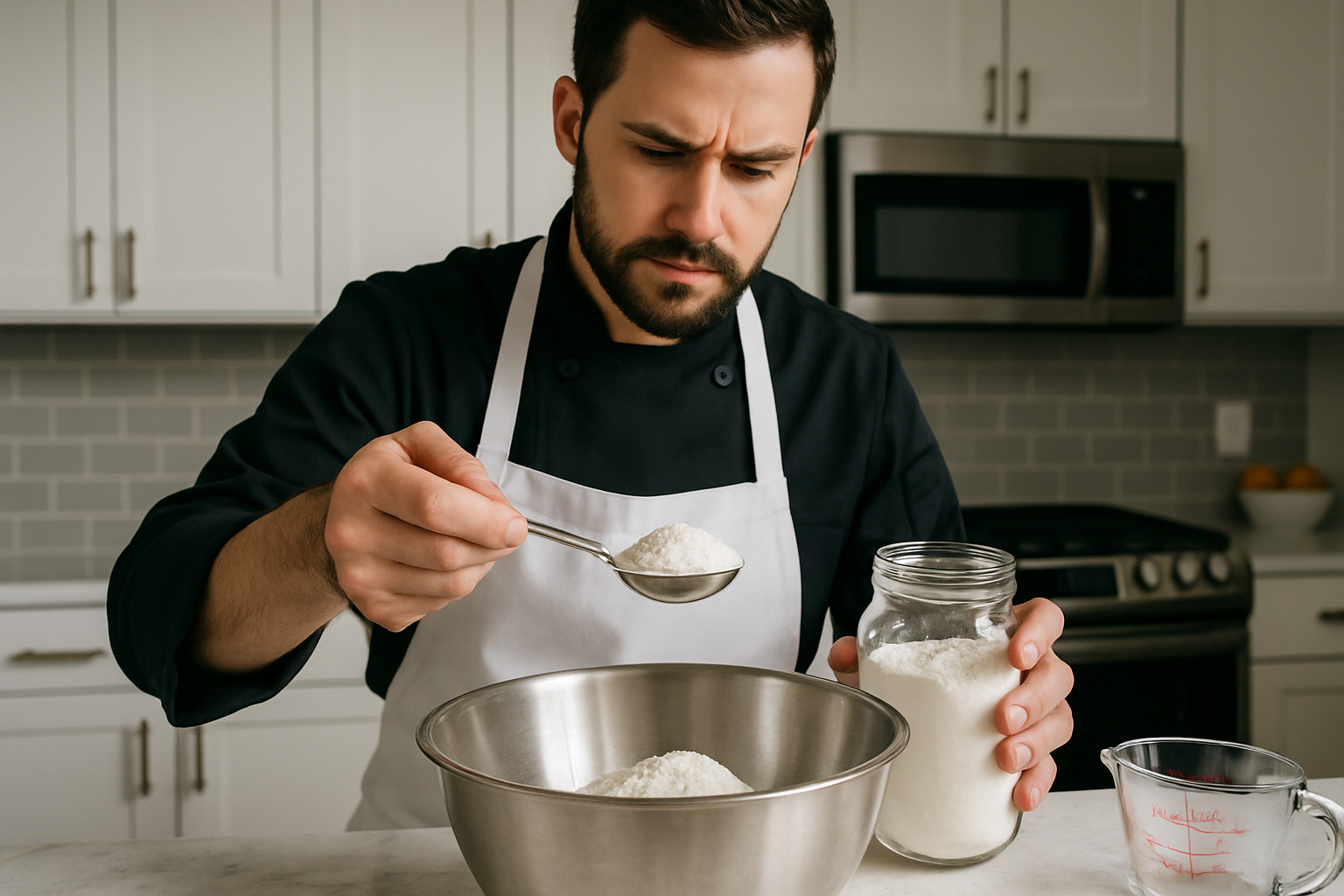
The difference between a good cook and a great one often comes down to one simple thing: accurate measuring. After exploring countless kitchens and watching both home cooks and professional chefs work their magic, we’ve finded that precision in measurement is the secret ingredient that transforms ordinary dishes into extraordinary ones.
Think about it – when you know exactly how many tablespoons in a cup and measure with confidence, your recipes turn out consistently delicious every single time. No more wondering why your cookies were perfect last week but flat this time, or why your sauce tastes different each time you make it.
The foundation of professional measuring starts with quality tools. Invest in a good set of measuring cups and spoons – preferably stainless steel or heavy-duty plastic that won’t warp in the dishwasher. Those flimsy plastic sets from the dollar store might save money upfront, but they’ll cost you in inconsistent results.
For dry ingredients, the spoon-and-level method is your best friend. Gently spoon flour, sugar, or cocoa powder into your measuring cup, then level it off with a straight-edged knife. Never scoop directly from the container – you’ll pack in way more than you need. The only exception? Brown sugar, which should be packed firmly unless the recipe says otherwise.
Liquid ingredients require a different approach entirely. Use those measuring cups with spouts and handles, place them on a flat surface, and read the measurement at eye level. This might seem fussy, but that slight angle when you’re looking down can throw off your measurement by a tablespoon or more.
Here’s a pro tip we learned from a pastry chef in New York City: lightly oil your measuring cup before measuring sticky ingredients like honey or molasses. They’ll slide right out instead of clinging to the sides, giving you more accurate measurements and less waste.
A digital kitchen scale takes the guesswork out of measuring entirely. Professional bakers swear by weight measurements because they’re simply more accurate. One cup of flour can vary by as much as 30% depending on how it’s measured, but 120 grams of flour is always exactly 120 grams.
The most common measuring mistakes happen when we’re in a hurry. Using dry measuring cups for liquids, eyeballing instead of leveling, or assuming “close enough” is good enough – these small errors add up, especially in baking where chemical reactions depend on precise ratios.
What If You Don’t Have the Right Tool?
We’ve all been there – you’re in the middle of a recipe and realize you don’t have the right measuring tool. Maybe you’re cooking in a vacation rental kitchen, or your measuring cup is buried somewhere in the dishwasher. Don’t panic! Kitchen improvisation is a skill every good cook develops.
When you need 1/4 cup but only have tablespoons, simply use 4 tablespoons instead. Since there are 16 tablespoons in a cup, 1/4 of that is exactly 4 tablespoons. No math anxiety required!
Missing a tablespoon measure? Use 3 teaspoons – they’re equivalent. In a pinch, a standard soup spoon from your flatware drawer is approximately one tablespoon, though it’s not precise enough for baking.
No measuring cups at all? Get creative with what you have. A standard coffee mug typically holds about 6-8 fluid ounces, which equals 12-16 tablespoons. A wine glass usually holds about 5-6 fluid ounces. These aren’t perfect substitutions, but they’ll get you close enough for most cooking applications.
For the most accurate improvisation, use your kitchen scale. One cup of water weighs exactly 8 ounces (about 237 grams), so you can measure by weight instead of volume. This works particularly well for liquids.
Smartphone apps and online converters can help with complex conversions, especially when you’re adapting international recipes. But honestly, once you master the basic relationship of how many tablespoons in a cup, you’ll rarely need them for everyday cooking.
Adjusting Recipes with Tablespoons and Cups
Recipe scaling becomes surprisingly simple when you understand the mathematical relationships between measurements. Knowing that 1 cup equals 16 tablespoons gives you the foundation to confidently double a recipe for a dinner party or halve it for a romantic meal.
When doubling recipes, 1/2 cup becomes 1 cup (16 tablespoons), and 1/4 cup becomes 1/2 cup (8 tablespoons). The math is straightforward, but the technique matters. When halving recipes, that 1 cup becomes 1/2 cup (8 tablespoons), and 1/2 cup becomes 1/4 cup (4 tablespoons).
Baking requires extra attention to detail because you’re essentially doing chemistry in your kitchen. Unlike cooking, where you can taste and adjust as you go, baking ingredients need precise ratios to create the right chemical reactions. You can throw in extra chocolate chips without worry, but don’t guess at your baking soda measurement.
Certain ingredients need special consideration when scaling. Leavening agents like baking powder and baking soda don’t always scale proportionally – sometimes doubling a recipe means using slightly less than double the leavening. Salt intensifies when you scale up, so taste as you go. Spices often need less proportional increase because their flavors concentrate.
Pan sizes affect more than just cooking time when you’re scaling recipes. A doubled cake batter might need two pans instead of one larger pan, and cooking times will change accordingly. Keep notes on what works so you can replicate your successes.
The beauty of understanding these measurement relationships is that they give you the confidence to experiment. Once you know that how many tablespoons in a cup is always 16, you can adapt any recipe to fit your needs, your crowd size, or your available ingredients.
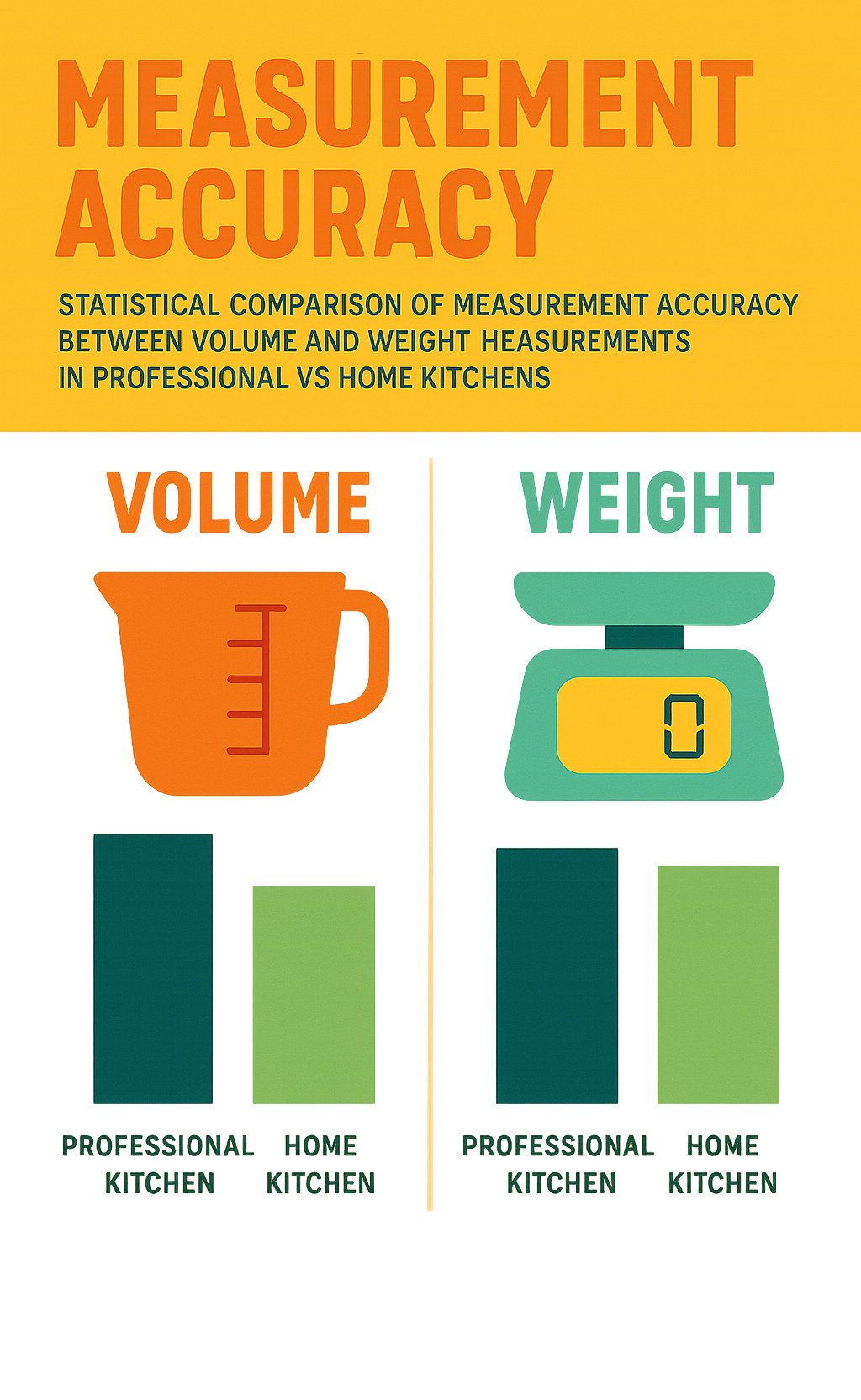
Frequently Asked Questions about How Many Tablespoons in a Cup
When you’re exploring new recipes or adapting family favorites, questions about measurements naturally arise. Here are the most common questions we hear about how many tablespoons in a cup conversions.
Is the conversion the same for dry and liquid ingredients?
Absolutely! The how many tablespoons in a cup conversion stays rock-solid at 16 tablespoons per cup, whether you’re measuring flour, sugar, milk, or olive oil. This consistency makes kitchen math so much easier than it could be.
The magic here is that we’re measuring volume – the amount of space something takes up – rather than weight. A cup of feathers and a cup of rocks take up the same space, even though they weigh completely different amounts.
Here’s where technique matters though. Liquid ingredients should be measured in those handy liquid measuring cups with spouts, and you’ll want to check the measurement at eye level for accuracy. Dry ingredients work best with flat-topped dry measuring cups using the spoon-and-level method.
The volume relationship never changes, but your measuring technique can make the difference between recipe success and “what went wrong here?”
Why are there different cup sizes around the world?
Different cup sizes developed because countries created their own measurement standards over centuries. It’s like how different languages evolved – each region developed what worked for them.
The US customary cup at 236.6 ml came from English measurement traditions but took its own path over time. When the metric system gained popularity worldwide, countries created the metric cup at a neat 250 ml. Meanwhile, the imperial cup at 284.1 ml stayed closer to those original English measurements.
Today, only the United States, Myanmar, and Liberia officially use the imperial system. This is why most international recipes you’ll find online use metric measurements, and why understanding how many tablespoons in a cup becomes so valuable when you’re adapting recipes from different countries.
These differences reflect each country’s journey toward measurement standardization. It’s actually pretty fascinating how something as simple as a cup can tell the story of different cultures and their approaches to cooking.
Can I substitute weight measurements for volume?
Weight measurements are definitely more accurate, especially when you’re baking those finicky desserts that demand precision. But here’s the thing – you can’t just swap them one-for-one because different ingredients have completely different densities.
Think about it this way: 1 cup of all-purpose flour weighs about 120-125 grams, while 1 cup of granulated sugar tips the scales at about 200 grams. 1 cup of butter weighs around 227 grams, but 1 cup of water weighs exactly 236.6 grams.
This is why a cup of flour and a cup of sugar look the same in your measuring cup but feel so different when you lift them. The volume stays consistent, but the weight varies dramatically.
For the best results, stick with whatever measurement type your recipe specifies. If you absolutely need to convert, use ingredient-specific conversion charts rather than guessing. Your taste buds will thank you for the precision, especially when you’re trying to recreate that perfect dish from your latest culinary trip.
Conclusion
Congratulations! You’ve now mastered one of the most essential kitchen conversions. Knowing how many tablespoons in a cup opens up a world of culinary possibilities, from perfecting your grandmother’s cookie recipe to confidently tackling that exotic dish you finded on your latest food trip.
The simple truth that 1 cup equals 16 tablespoons becomes your kitchen superpower. No more pausing mid-recipe to fumble with conversion apps or second-guessing your measurements. Whether you’re measuring flour for homemade bread or portioning sauce for pasta night, this fundamental relationship stays constant.
Think about how this knowledge transforms your cooking experience. When you’re recreating that amazing dish you tried during a food tour, you can focus on the flavors and techniques rather than worrying about getting the measurements wrong. When you’re scaling up a recipe for friends or scaling down for a cozy dinner, the math becomes effortless.
The precision that comes from accurate measuring isn’t about taking the joy out of cooking – it’s about giving you the confidence to be creative. When your foundation is solid, you’re free to experiment with seasonings, try new ingredients, and make each dish your own.
At The Dining Destination, we’ve seen how mastering these basics lifts home cooks from hesitant followers of recipes to confident culinary explorers. Whether you’re cooking in your New York City apartment or attempting an international recipe inspired by global food trends, these measurement skills support every culinary trip.
Remember: proper measuring technique matters just as much as knowing the numbers. Use the spoon-and-level method for dry ingredients, measure liquids at eye level, and invest in quality measuring tools that will serve you well for years to come.
Your kitchen confidence starts with understanding these fundamental relationships. Now that you’ve got how many tablespoons in a cup down pat, every recipe becomes an opportunity rather than a challenge. Happy cooking, and may your measurements always be spot-on!

